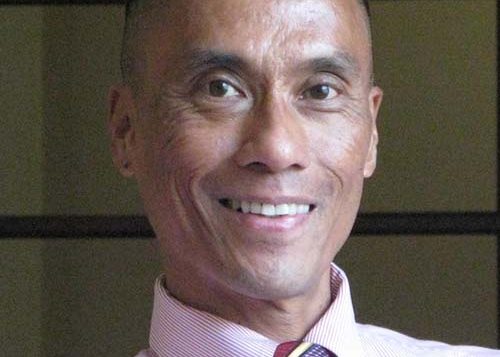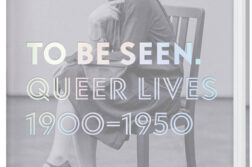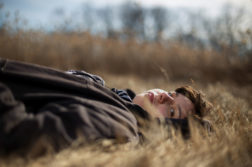WITH the skyrocketing growth of our digital world and the ever-accelerating rate at which news and information are disseminated, many people, especially young people, may have little knowledge of the early LGBT struggle, or the trailblazers who fought for equal rights, respect, and dignity. A national LGBT museum would be a place of remembrance of our struggles to overcome injustices of national importance and of the celebrations of the successes in surmounting them.
The accomplishments are well known—legal recognition, HIV health care, marriage equality, military service, and so on. But most of us are foggy about the critical details. A national LGBT museum could immerse visitors in the fears that darkened our daily lives when police and government officials would haul us away to prison for being our authentic selves. It could also place them on the steps of the U.S. Supreme Court on the joyful day that marriage equality became the law of the land.
Museum leaders agree that institutions of memory such as museums, historical monuments, or sacred sites are essential to the stability of society. Their studies show that people know and agree with this, even with no intention to visit them. In times of war, enemies target not only citizens and military installations, but also institutions of memory. They know why people flocked to museums right after September 11th. But opportunities for reverential expressions of remembrance, for celebratory outbursts, and for sympathetic tears in the face of tragedy should not be limited to death camp sites, sports stadiums, and battlefields. Museums can share in this power of place. A national LGBT museum as a place of remembrance could become a place to contemplate the balance between transcending past injustices and vigilance in the event that our freedoms are taken away again.
The iridescent threads of LGBT America, including current stories as history continues to be made, deserve a place in the rich tapestry of our American narrative. A national LGBT museum run with integrity and serious scholarship commands the authority that grants LGBT history and culture the place it deserves in our national heritage. We have been denied this place despite our contributions in the military, sports, business, entertainment, the arts, public service, and everyday acts of compassion and sacrifice by everyday citizens.
It all boils down to individuals. The lives of LGBT ranchers and farmers in the West, of the lesbian family with kids living in Brooklyn, and of our gay and lesbian Olympic medal winners speak to us personally: to our LGBT and straight citizenry, to Easterners and Westerners, to all aspiring athletes, moving us to bring our personal stories to public view in our own ways. Collectively their stories speak to the broader themes of the universal human experience.
According to studies by the Institute of Museum and Library Services, the American Alliance of Museums, and The David and Lucile Packard Foundation, museums are the most trusted information source, rated higher than news media, academic researchers, and the U.S. government. A national LGBT museum would serve as a physical forum, a platform for our diverse voices to speak for ourselves and to speak our truths. Done well, a national LGBT museum could be a symbol of pride that is perpetual, and not just once a year. Our stories are more likely to be forgotten in a transient or virtual world, less authentic if told from platforms belonging to others, and sadly simplistic if missing our multiple perspectives.
Although more museums are reaching beyond object collections to create visitor experiences with meaningful messages, there nonetheless remains a silent power in the object speaking from within a museum gallery. Planning consultations for the National Museum of the American Indian gave birth to what was a paradigm shift back in the 1990s. Native collection objects embodied life, and not honoring their lives would put the tribal culture at risk. This principle led to a different vision for collections care: to create a respectful home, complete with fire, food, and light for tribal objects, not a sterile warehouse. This concept amounted to a minor geologic tremor in the world of museum conservation and collections management. In the spirit of metaphor in Native storytelling, the object housing would be the kitchen, hearth, and therefore the heart of the museum’s architectural spaces. The exhibition galleries would be the formal living room for welcoming guests.
I am not suggesting that the treatment of LGBT cultural patrimony imitate this analogy. But museum objects can elicit visceral responses that words or images cannot do. Being in their presence and pondering their significance might be an intimate and quiet reflection or a thrilling, powerful jolt that launches our imagination in new directions. Revealing the essence of objects in exhibitions is unique to museums as collecting institutions and a desired result of collecting, preserving, and presenting material culture. As David K. Allison says about the objects on display in the 9/11 exhibition at the Smithsonian’s National Museum of American History: “Their power lives in their authenticity and their mute, unchanging simplicity.”
How can one not be stirred seeing up close and first hand the original rainbow flag? panels of the AIDS quilt or the Shower of Stoles? authentic Supreme Court documents granting marriage equality? actual pink triangles from Nazi concentration camps? A national LGBT museum would harness the power of objects, documents, and digital records as physical and virtual evidence of our LGBT historical and cultural heritage.







